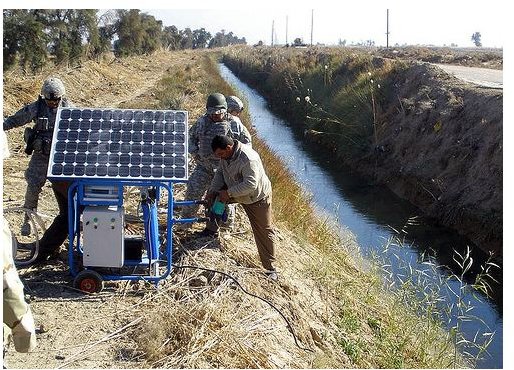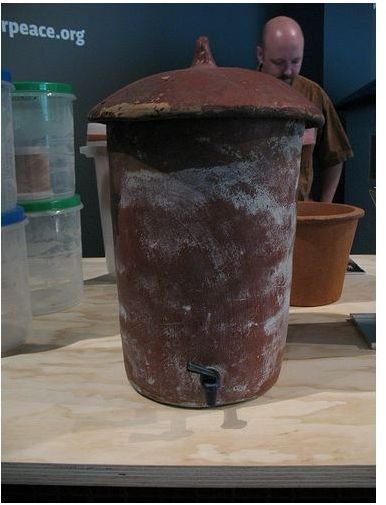Comparison of Household Water Treatment Systems
Introduction
In order to know the kind of water purifier suiting your requirements you will have to consider the quality of tap water in your area. The quality of water that you get in your home depends on the sources of water. Apart from this the seasonal changes will also radically alter the quality of your water on a monthly or even weekly basis. In reality what household water treatment systems you require depends on the quality of the water and contaminants contained in it. To buy the best house water filter purification systems you will have to conduct a comparison of household water treatment systems taking into consideration the different body capacity of warding off common cold, infection or even chemical contaminants from water. Each person has different resistance power so that chemicals, salts or even metal contaminants may not affect you but it might affect any of your family members.
Thus when you go in for search for better drinking water you are encountered with two options: bottled water or house water filter and purification systems. You can get bottled water under many brands like —“drinking”, “spring”, “mineral”, etc., whereas a house water filter and purification system is capable of producing several qualities of drinking water at home. The quality directly depends on the technique used such as filtration, reverse osmosis or distillation. However, do not be misinformed by the fact that all the systems can provide you with pure and clean water. In fact distillation is the only process which helps in removing all the five main classes of water pollution: salts, bacterial contaminants, organic (carbon-based) chemicals, heavy metals and radioactive contaminants. All said cost is also an important factor which you will have to consider when investing in home water filter and purification systems. We shall now look at the different methods by which you can get best quality of drinking water at home.
I.Disinfectants
Even though disinfecting water to get good drinking water is not well known but still it is the simplest path to water quality. One of the dependable disinfection processes is boiling water for an adequate time but this becomes unfeasible owing to the inaccessibility or high cost of fuel.
On the other hand solar pasteurization can solve the fuel problem to an extent but solar procedures alter in their strength and efficiency relying on intensity and length of sunlight. Chemical disinfection produces a displeasing water taste for many and also calls for some knowledge on the part of the user with regard to the doses and deviations between alternative chemicals.
Nevertheless there are some alternative solutions like the natural disinfection agents, offering a novel of getting quality water. Commercial offerings like disinfection packets and tiny sodium hypochlorite sources offer a solution. Disinfection filtrates using chemically infused resins could decrease the ramifications of disinfectant doses and kinds. Apart from this there are electrical disinfection process like the Emerald electrolysis unit and the Hydro-Flow ultra violet light filter, technologies of the future.
II. Distillation Systems
Water is boiled in a chamber under the distillation system and then is vaporized and condensed back into water in a different chamber. This helps in filtering dissolved metals and minerals. The main drawback of this system is that it involves lot of energy costs because of which this process is used only for the purpose of drinking and cooking. The quality of water relies on the sources of water, the time taken for the process to complete and the reliability of the equipment used.
III. Filtration Systems
Filters can be set up in numerous ways with varying kinds of mechanical and chemical reducing capacities. Even though some are premeditated to filter water for the full house, while most of the systems today are contrived to treat water from a single tap. Some filters like ceramic pitchers are operated manually, while others like tap filters and under-sink arrangements, are bonded straight to the plumbing system.
1. Oxidation
Disproportionate levels of iron and manganese are treated by oxidation, succeeded by Filtration. Chlorine or potassium permanganate is applied to tarnish the iron or manganese to an indissoluble form, and then is filtered by a special media bed. The filter media bed then has to be washed and the oxidizing factor must be refilled frequently.
2.Sand filtration
Sand filtration is a supple procedure, which can be attempted in tiny containers or in industrial installations. Units which prove to be of practical use for family requirements must be designed and operated with care to guarantee certainty of results. The biological ‘skin’ forming the top layer of the sand filter is decisive to the usefulness of the filtering procedure. It also impedes the flow of water after some time. Removal of this skin reduces the quality of the filtering process until the biological procedures renew.
Ceramic Water Filter
Reverse Osmosis (RO) Systems
The working of a reverse osmosis system takes place by the application of pressure to force water by a semi-permeable tissue layer. These systems are usually used to reduce metals and minerals like sodium and chloride and heavy metals, like copper, chromium, and lead by reverse osmosis.
Contaminants like arsenic V, fluoride, and nitrates can be reduced by RO system.
The main drawback of this system is that it produces a lot of wastewater. Since these systems produce water at a slower pace a supercharged storage tank is generally set up so that water becomes accessible to drinking and cooking requirements. A special tap is installed at the kitchen sink to get water from the tank.
RO water filters
RO also known as hyper filtration is the best kind of filtration obtainable these days. It is helpful in wiping out 90% to 99% of contaminants in water, and particles as small as single ions. The pores in the membrane of a RO system are merely around 0.0005 micron in magnitude where as bacteria are 0.2 to 1 micron and viruses are 0.02 to 0.4 microns.
Thin Film Composite (TFC) and Cellulose Triacetate (CTA) are the two different kinds of membranes most normally used for reverse osmosis to purify water at home.
TFC membranes are capable of filtering more contaminants than that of a CTA membrane. On the other hand TFC membranes degrade very soon in the presence of chlorine. Thus it makes all the more important for you to choose a quality triggered activated carbon pre-filter for your RO system.
Please visit Different Water Filtration Methods Explained - APEC (Advanced Purification Engineering Corp.) to know more about RO system and other methods of purifying water.
How does an RO system work?
A semi-permeable membrane helps pure water to flow through it and rejects contaminants of large dimension to go through the minute pores in the film. The membrane in the RO system is constantly cleaned by itself through a process known as cross flow.
While some of the fluid infiltrates via the membrane the remaining proceeds downstream, brushing the discarded contaminants away from the membrane and down the drain.
This process in reality needs a driving force to thrust the fluid by the membrane. For more details you can have a look here. To decrease membrane befouling and to preserve best performance, it is vital to guarantee that planned substitutes of carbon or other pre-filters are adopted. The reverse osmosis membrane (TFC) should be substituted every 2-3 years.
Softening Hard Water Using Salt less Water Softeners or Salt based Water Softeners
With the help of water softeners, hard water can be made usable. Two different kinds of equipment can be used to soften hard water, and they are the salt based water softeners and the saltless water softeners.
Even though both equipment are used to soften hard water, the procedures involved are completely different. Sodium ions are introduced to the hard water so that hard calcium and magnesium ions are replaced under the salt based water softeners procedures. Thus the water is softened since the hard ions are substituted from the hard water.
Conversely, salt less water softeners induce a physical composition change in the magnesium and calcium ions, producing a tough attractive drive between the two ions. Thus these ions are attracted to each other thereby ending the formation of other compounds with other ions consequently softening the water. Get more information on water softeners here.
Solar Powered Water Filter

Conclusion
After looking at the various household water treatment systems my opinion is that all the home water treatment systems except steam distillation gradually degrades the quality of water.
Distillation totally removes hazardous bacteria and other micro-organisms. Now you may ask whether it is really worth to put in additional effort to purify drinking water. The answer is very simple. Just be aware of the fact that every water purifiers and purified drinking water has its own pros and cons or fits a precise customer or industrial need.
You have to make a comparison of household water treatment systems which best suit you and go in for that. Decide how pure you want your drinking water to be and this will help you to select the system of water purifier you require.
Reference
What whole house water filters work best?
Top 10 Water Purifier Manufacturers
Randy Johnson - Drinking Water Treatment Methods
Paul Ek - Why Should You Buy Salt less Water Softeners?
Image references:
The U.S. Army - Solar Powered Water Filter
Hoyasmeg - Ceramic Water Filter_2048
